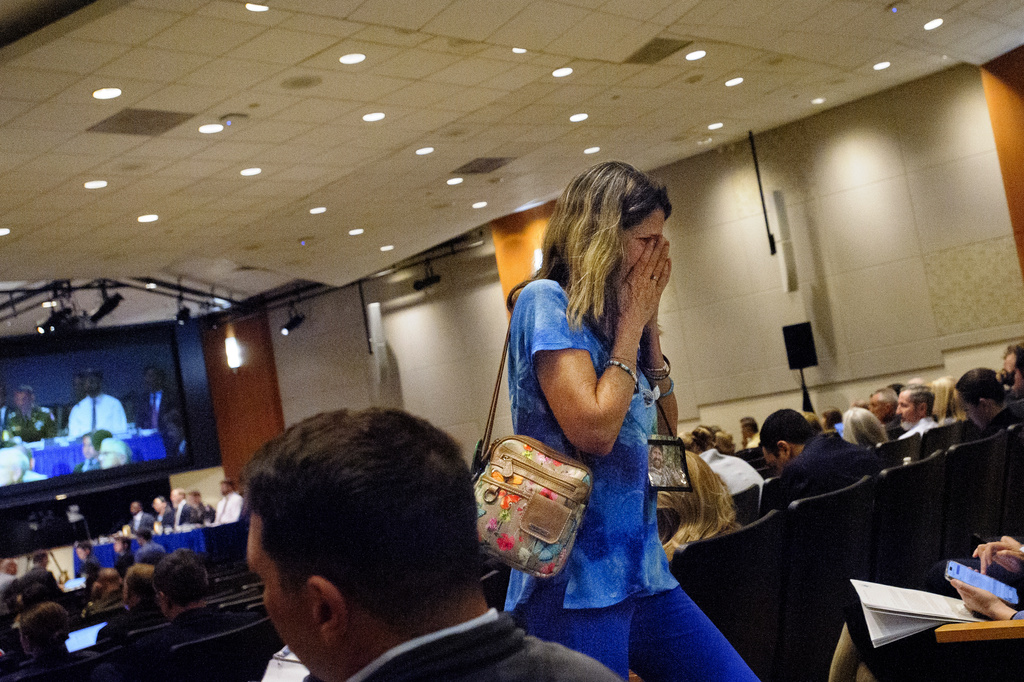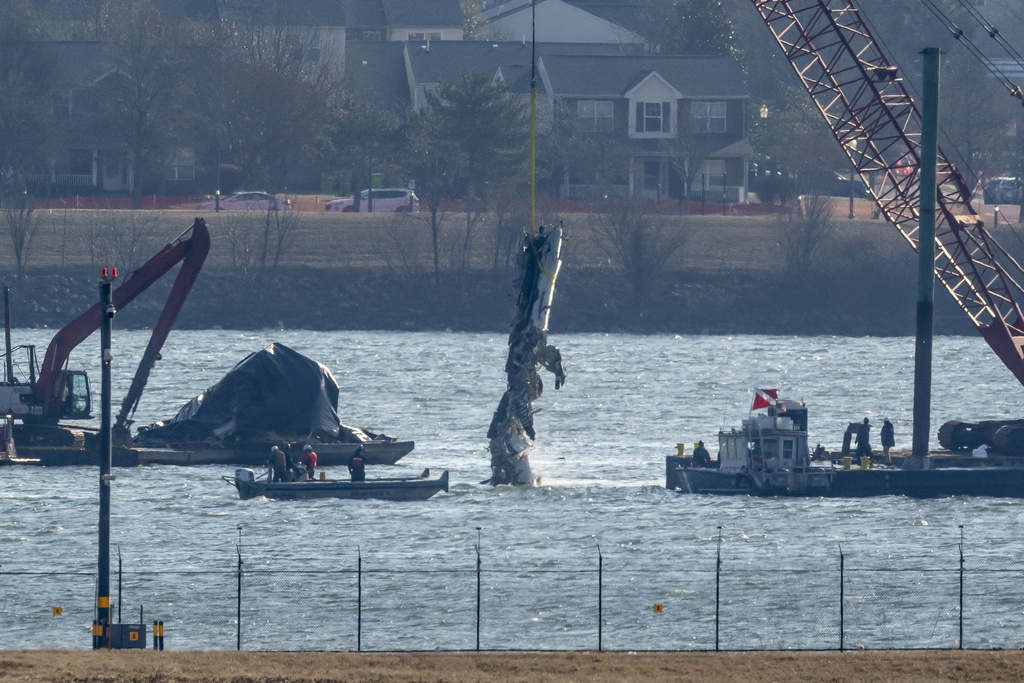Black Hawk Altimeter Fault Linked to Deadly Crash \ Newslooks \ Washington DC \ Mary Sidiqi \ Evening Edition \ An NTSB investigation into January’s fatal midair crash over Washington reveals a Black Hawk helicopter was flying too high due to faulty altimeter readings. FAA and Army officials exchanged blame over airspace management failures. The crash killed 67 and raised questions about helicopter routes and outdated aircraft technology.

Quick Looks
- Crash killed 67 people near Reagan National Airport
- Black Hawk helicopter flew higher than permitted, NTSB says
- Altimeter discrepancy found in helicopter’s flight instruments
- FAA, Army blamed each other in public safety board hearing
- Air traffic control miscommunication and frequency issues cited
- Army admits 80–130 foot altitude error margins are common
- FAA failed to heed past warnings about airspace safety
- Black Hawk used outdated technology, lacking key safety systems
- 29 communications in two minutes overwhelmed the air traffic controller
- Legislation introduced to require ADS-B tracking on all aircraft
Deep Look
Investigators from the National Transportation Safety Board (NTSB) are painting a picture of systematic failures, outdated equipment, and bureaucratic inertia as they probe the deadly January midair collision that claimed 67 lives over Ronald Reagan Washington National Airport. The tragedy — the nation’s deadliest aviation accident since 2001 — involved an American Airlines passenger jet and a U.S. Army Black Hawk helicopter.
On the first day of a three-day public hearing, NTSB investigators disclosed that the Black Hawk was flying higher than permitted and that its altitude readings were significantly inaccurate due to outdated barometric altimeters. The Army acknowledged these instruments can be off by up to 130 feet, yet still considered them “within acceptable limits.”
Black Hawk’s Altitude Discrepancy
The Black Hawk exceeded the 200-foot altitude cap along a helicopter route over the Potomac River, colliding with a descending American Airlines flight. Flight data revealed the helicopter was flying 80 to 100 feet higher than the pilots believed — a discrepancy attributed to barometric altimeters that misread actual altitude. Tests conducted by the NTSB on three helicopters from the same Army unit confirmed similar inaccuracies.
The helicopter involved used 1970s-era technology that relied on barometric altimeters, unlike modern air data systems with enhanced precision. Sikorsky, the manufacturer, acknowledged the limitations of the aging aircraft.
Dan Cooper from Sikorsky explained that newer models use advanced air data computers for more accurate readings, but the Black Hawk in question lacked such upgrades. The NTSB reported that barometric altimeter readings in the tested helicopters were consistently 80 to 130 feet below the actual altitude shown by radio altimeters.
Airspace Management & Control Failures
Perhaps most alarming, investigators revealed that air traffic controllers and pilots were operating under conflicting assumptions about who was responsible for maintaining safe distances between helicopters and airplanes. While both the FAA and the Army claimed the existing route structures didn’t guarantee separation, pilots believed controllers would never clear them to fly near active runways.
Chief Warrant Officer David Van Vetchen, a helicopter pilot, testified that in similar scenarios, controllers always held helicopters until runways were clear. After the crash, his peers echoed the belief that route use near active runways was forbidden, raising serious concerns about communication breakdowns.
Further complicating matters, the frequency system used by helicopters and airplanes meant the two groups couldn’t hear each other, only the controller. This contributed to “stepped on transmissions”, or missed communications, in the two minutes before the crash. According to the NTSB, there were 29 separate transmissions between the tower and aircraft during the final 117 seconds before impact.
An NTSB animation demonstrated how the Black Hawk inadvertently entered the path of the descending American Airlines flight, resulting in a devastating collision. The Army’s use of night vision goggles, which limit peripheral vision, was also flagged as a contributing factor.
Systemic Warnings Ignored
The FAA is under scrutiny for ignoring red flags long before the crash. A 2022 working group raised concerns about dense helicopter traffic around Reagan National Airport, recommending cautionary notes on flight charts. The FAA reportedly declined to implement those changes, even though tower staff had voiced repeated concerns.
NTSB Chair Jennifer Homendy condemned the agency’s response, stating, “Every sign was there that there was a safety risk… but instead of taking ownership, FAA managers were transferred out.” She expressed outrage at the FAA’s bureaucratic deflections in the face of a catastrophe that had ample warning signs.
The investigation also revealed the Army’s failure to use ADS-B Out technology, a modern system that transmits an aircraft’s location to air traffic controllers and nearby planes. While standard in commercial aviation, military aircraft often receive exemptions from its use — exemptions now being called into question.
Legislative Response and Safety Reforms
In response to the crash, Senator Ted Cruz introduced legislation mandating universal use of ADS-B In and Out systems across all aircraft, including military. His proposal would revoke current exemptions granted to Department of Defense aircraft.
NTSB has long urged this change, citing prior incidents where lack of location broadcasting technology contributed to deadly collisions. Transportation Secretary Sean Duffy called the legislation “the right approach,” and criticized previous administrations for neglecting known safety concerns.
Meanwhile, Army engineers like Scott Rosengren are pushing for accelerated modernization of the Black Hawk fleet. “If I were king for a day,” Rosengren said, “I’d retire all older Black Hawks immediately.” He also expressed concern over less than 500 feet of separation between air traffic routes — a dangerously narrow buffer in congested airspace.
A Pattern of Near Misses
The January crash was not an isolated event. Investigators revealed the FAA missed 85 near-miss incidents in the same airspace in recent years. This string of failures has rattled both regulators and the public, reigniting debate over whether enough is being done to protect the flying public.
While air travel remains statistically the safest mode of transportation, experts caution that systemic gaps, aging equipment, and human error can create devastating outcomes when combined.
The NTSB’s final report is not expected until next year, but early testimony and evidence point to a need for sweeping reform — not just in equipment and procedures, but in agency accountability and inter-agency communication.
Black Hawk Altimeter







